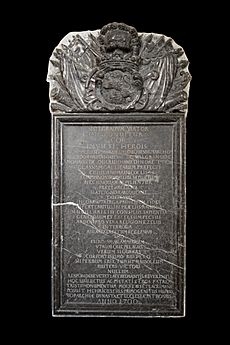Abraham Duquesne facts for kids
Quick facts for kids
Abraham Duquesne
|
|
|---|---|
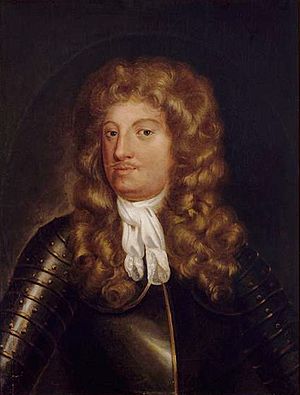
Portrait by Antoine Graincourt
|
|
| Born | 1610 Dieppe, Normandy, France |
| Died | 2 February 1688 Paris, France |
| Allegiance | |
| Service/ |
|
| Rank | Vice Admiral |
| Battles/wars |
|
Abraham Duquesne (born around 1610, died February 2, 1688) was a famous French naval officer. He was also an admiral in the Swedish navy for a time. Born in Dieppe, a seaport in France, he came from a family of sailors. Abraham Duquesne was a Huguenot, which means he was a French Protestant. He started his career in merchant ships before joining the navy.
Contents
In 1635, Abraham Duquesne became a captain in the French navy. He quickly became known for his bravery. In 1637, he captured the Lérins Islands from Spain. This was a big win for France.
Around this time, his father died fighting the Spanish. This made Duquesne very determined to get revenge. He fought fiercely against the Spanish in many battles. These included the Battle of Guetaria in 1638 and battles near Tarragona and Barcelona in 1641.
In 1643, Duquesne left France to join the Royal Swedish navy. He fought in the Danish-Swedish War. He even faced the Danish fleet led by King Christian IV of Denmark himself.
Duquesne played a key role in the Battle of Fehmarn Belt. In this battle, the Danes were soundly defeated. After peace was made between Denmark and Sweden in 1645, Duquesne returned to France.
Back in French Service
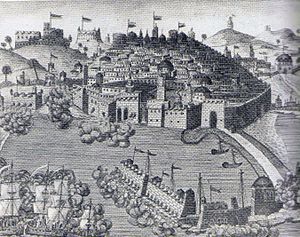
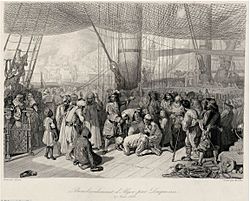
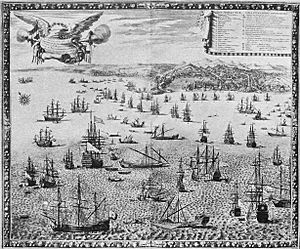
Back in France, Duquesne helped put down a rebellion in Bordeaux in 1650. The Spanish, his old enemies, were supporting this rebellion. Duquesne used his own money to create a fleet. He then blocked the port of Gironde, forcing Bordeaux to surrender.
For his success, he was promoted to Rear-Admiral. He also received a castle and the entire island of Indre, Loire-Atlantique as a gift. When France and Spain made peace in 1659, Duquesne turned his attention to fighting pirates in the Mediterranean Sea.
In 1667, he was promoted again to Vice-Admiral. He showed great skill during the Third Dutch War. He was second-in-command of the French fleet at the Battle of Solebay. He also supported rebels in Messina, fighting against the combined fleets of Spain and the Netherlands. He faced the famous Dutch admiral Michiel de Ruyter in battles like Battle of Stromboli and Battle of Augusta. De Ruyter was badly wounded in the Battle of Augusta.
Duquesne helped secure French control of the Mediterranean Sea. For his achievements, King Louis XIV of France personally praised him. In 1681, Duquesne was given the title of marquis and the estate of Bouchet, Drôme. This was a great honor, especially because he was a Protestant in a mostly Catholic country.
Duquesne also fought against the Barbary pirates in 1681. He led bombardments of Algiers in 1682 and 1683. He also bombarded the city of Genoa in 1684.
Final Years
In 1684, Duquesne retired due to poor health. He died in Paris on February 2, 1688.
After his death, Abraham Duquesne's heart was placed in a silver box. It was sent to Aubonne, Switzerland. More than a hundred years later, in 1894, the box was found. His heart was then moved to his birthplace in Dieppe, France.
Fun Facts
- The Marquis Duquesne de Menneville, another famous sailor, was Abraham Duquesne's grand-nephew.
- Eight ships of the Royal French Navy have been named in his honor. You can learn more at French ship Duquesne.
See also
 In Spanish: Abraham Duquesne para niños
In Spanish: Abraham Duquesne para niños


